Monitoring Users and Profiles Sync via the Admin Panel¶
For users of the Email Sidebar on:

6 min read
Important
To use RG Email Sidebar Admin panel, special access permissions are required. To request the permissions for your organization, contact Revenue Grid support team by email. Admin panel provides tools for managing end users and some of its key settings it includes duplicate RG Email Sidebar Customization and Sync settings on Admin level
Administration panel includes tools for real-time tracking of synchronization statuses of RG users and profiles to promptly resolve emerging sync issues.
Sync statuses can be monitored and managed by applying different filters, focusing view on list items with certain parameters.
You can identify whether synchronization is enabled or disabled for a Profile or user by color coding of Synchronization status:
- Enabled status is highlighted in green font color
- Disabled status is highlighted in red font color
You can monitor Users’ sync statuses using the following Administration Panel tools:
- Monitoring Profiles’ sync statuses
- Monitoring Users in specific Profiles
- Exporting Users to CSV
- Monitoring synchronization statistics for s specific Profile
- Exporting synchronization sessions to CSV
- Viewing synchronization job details
- Downloading logs
- Monitoring synchronization issues for a specific User
Monitoring Profiles’ sync statuses¶
You can apply filters to the list view and monitor the Profiles with enabled or disabled synchronization status.
To monitor Profiles’ synchronization statuses:
1. Go to the Profiles page under Administration
2. Select your filtering criteria in the Filter by box at the top of the page. For example, enabled Synchronization status. The list will show all Profiles with enabled sync status
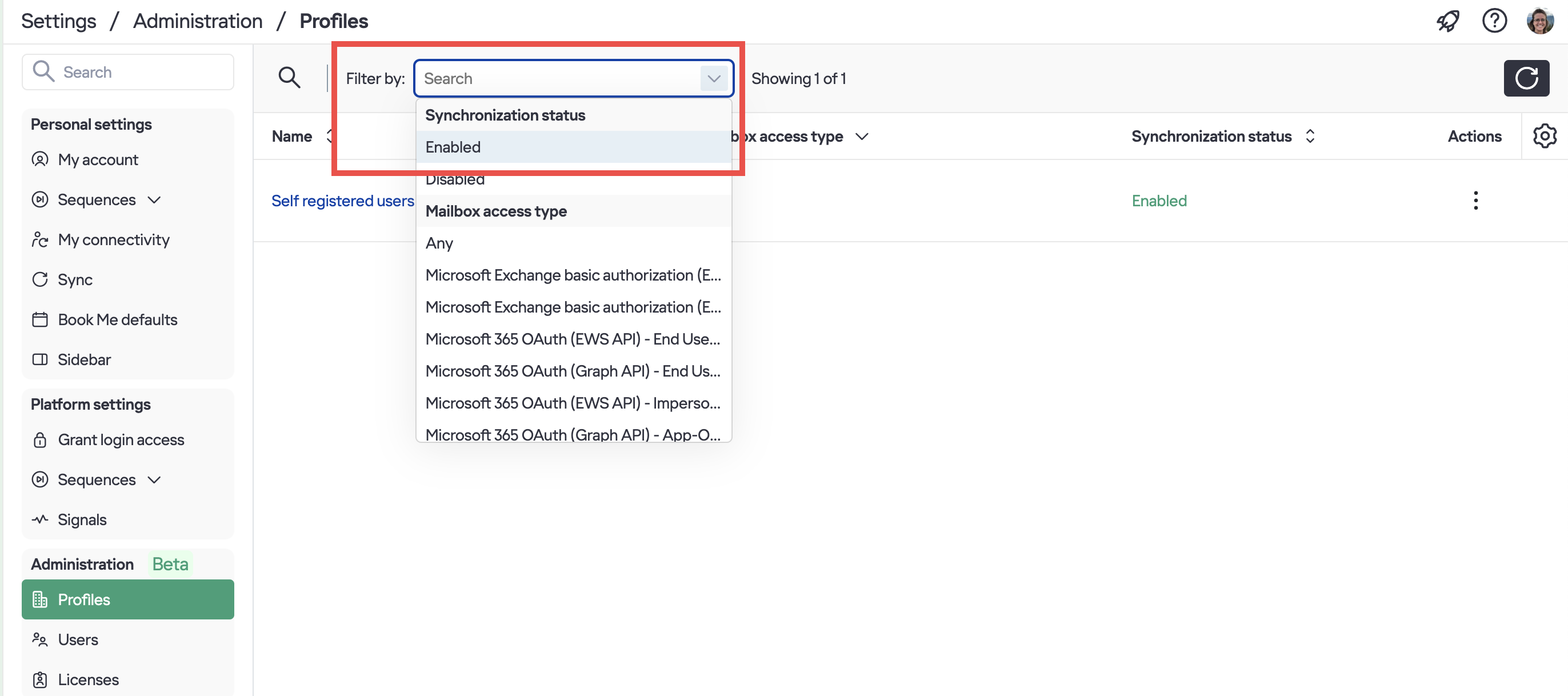
Monitoring Users in a specific Profile¶
1. Go to the Profiles page
2. Open the necessary Profile
3. Switch to the Users subtab.
4. Select your filtering criteria in the Filter by box at the top of the page. For example, enabled, disabled, or disabled due to an error Synchronization status.
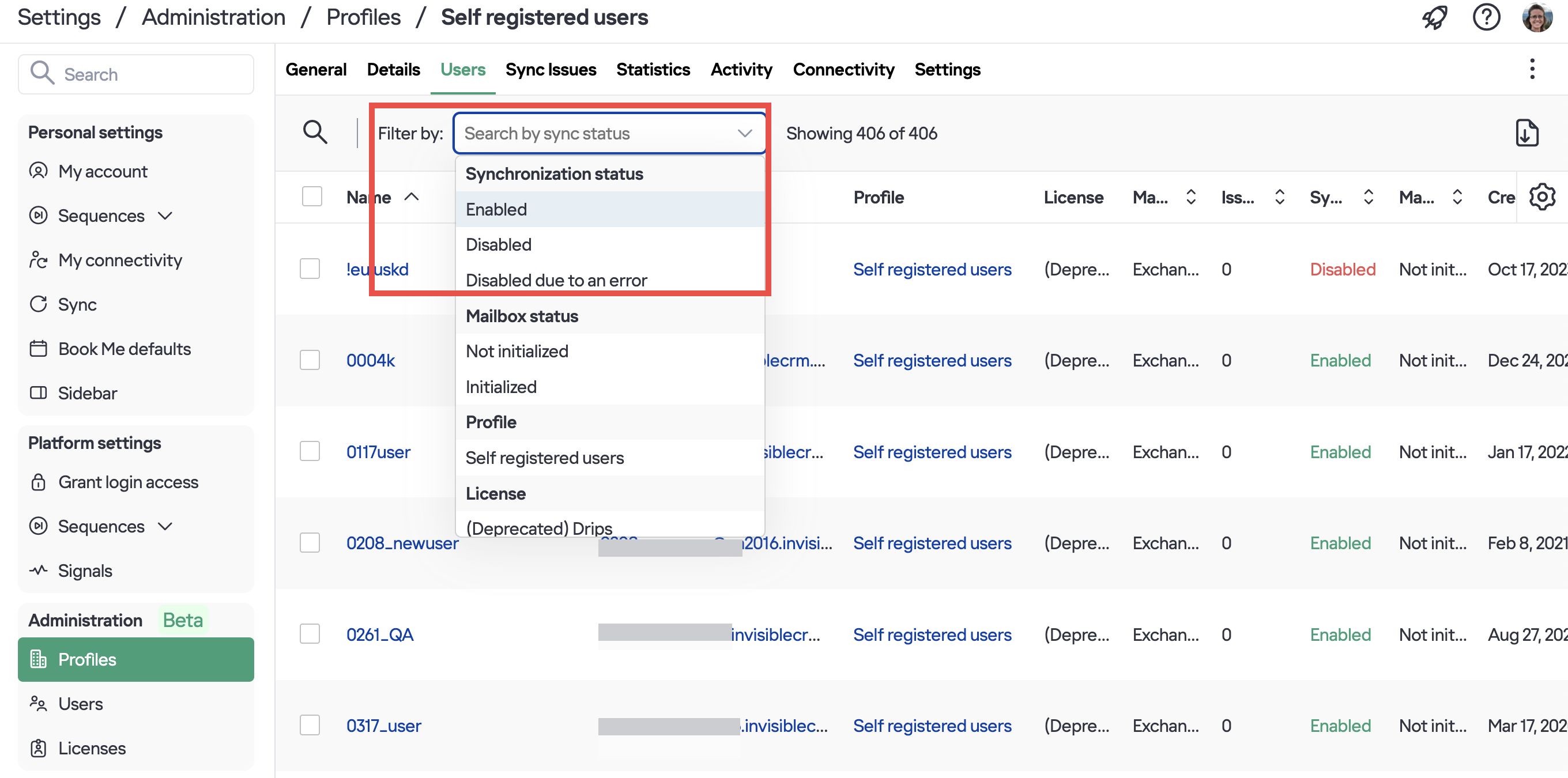
Exporting Users data to CSV¶
To export the table with Users’ data displayed on this page, click the Export to CSV in the upper right-hand corner of the page.
Wait until the document downloads and then open it in MS Excel or other preferred CSV editor.

Monitoring synchronization statistics for a specific Profile¶
You can view a Profile’s sync sessions on the Statistics tab.
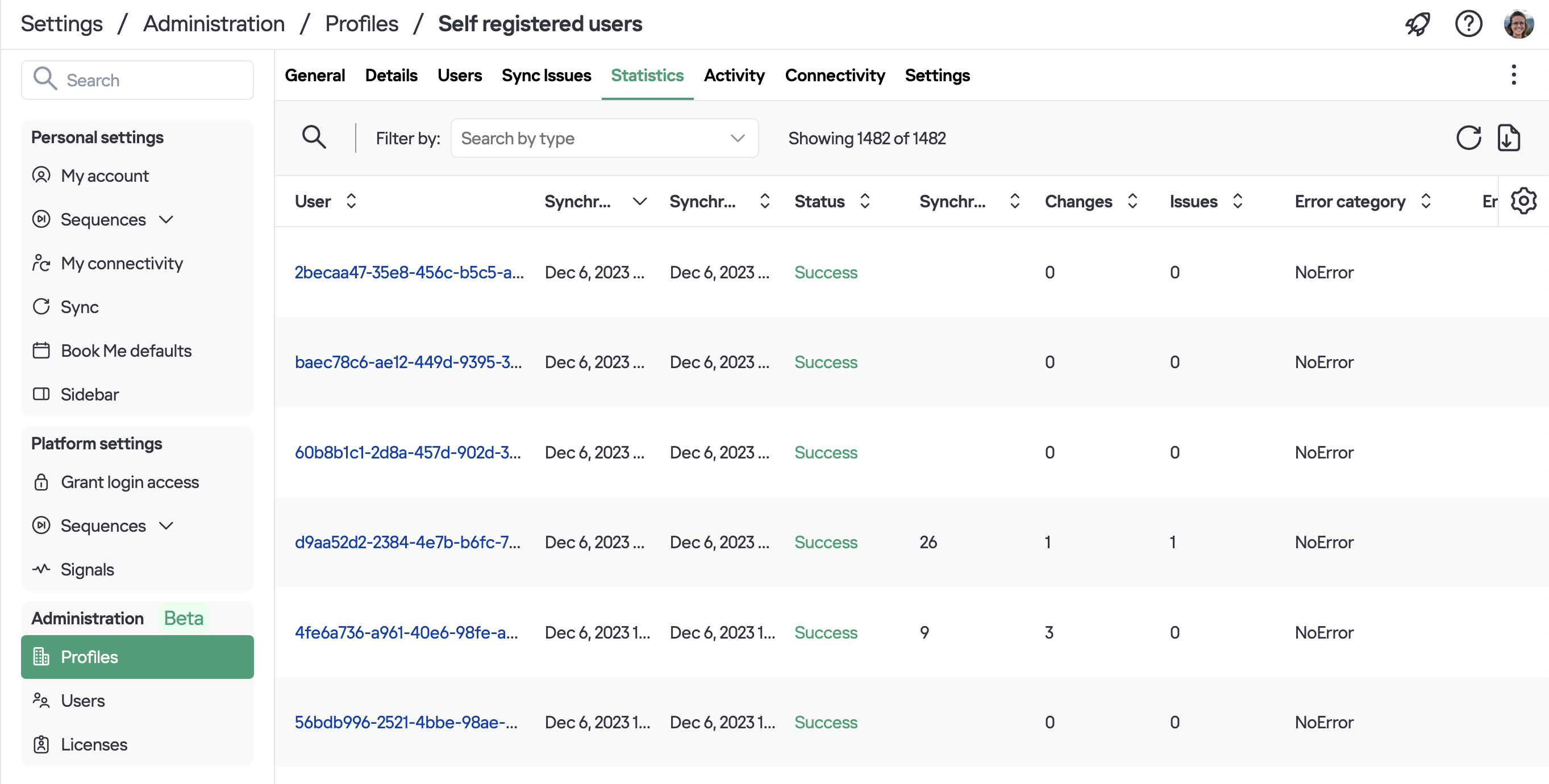
Exporting Synchronization Sessions to CSV¶
To export the data with synchronization sessions details to CSV, click the Export to CSV in the upper right-hand corner of the page.
Wait until the document downloads and then open it in MS Excel or other preferred CSV editor.
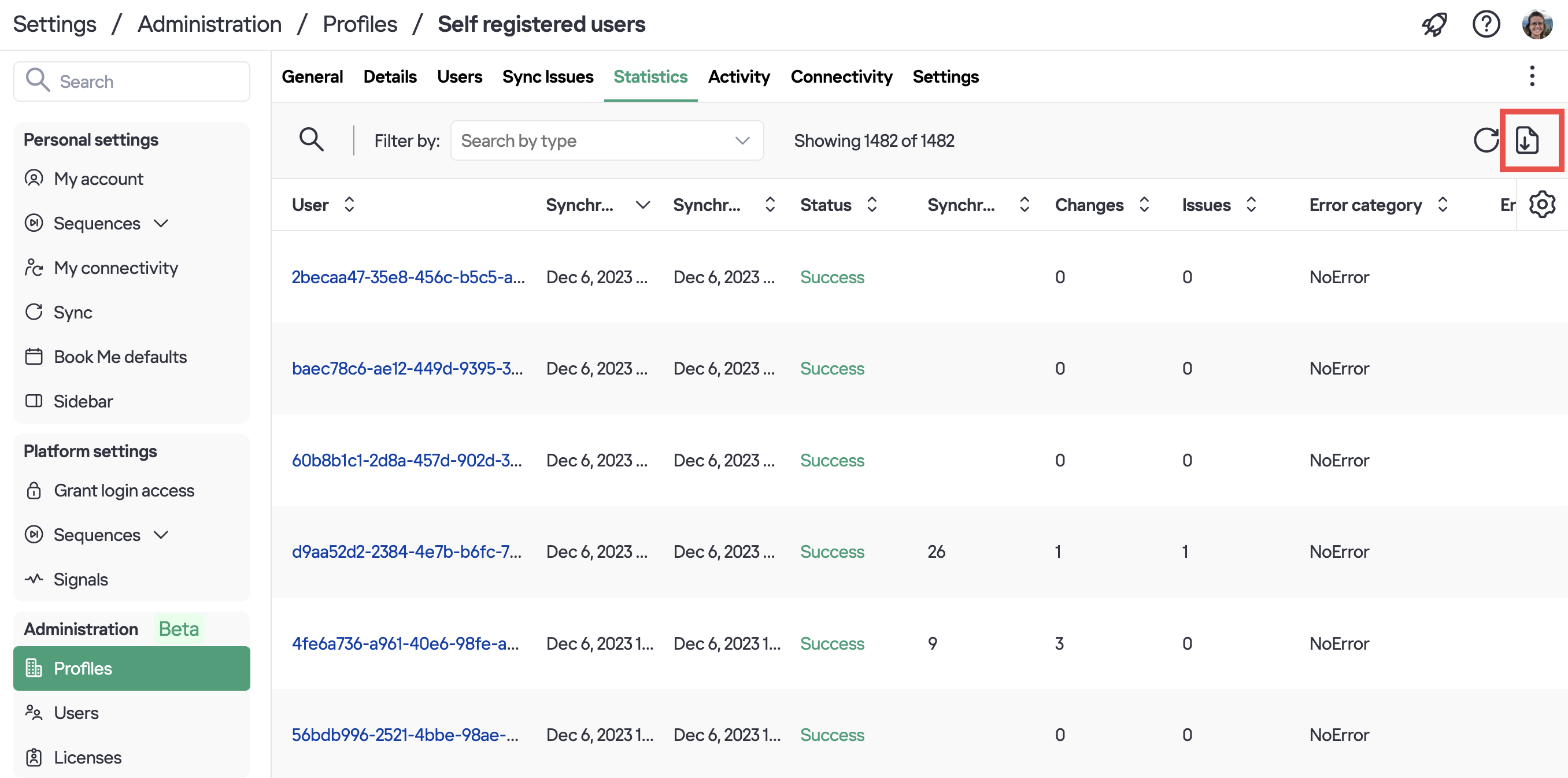
Viewing synchronization job details¶
You can view synchronization job details for all Users of a specific Profile on the Statistics subtab.
Note
Some columns are hidden by default. To add and view more columns, click the Gear ⚙ icon and select the columns you need from the picklist
You can view sync job details by clicking the i icon in the Actions column.
The following columns show sync session details for Users:
he subtab has the following columns that can be added or removed via the menu summoned by clicking the Gear ⚙ icon:
-
Job ID (hidden by default)
-
User
-
Synchronization start date
-
Synchronization end date
-
Status
-
Synchronization Scope
-
Changes
-
Issues
-
Error Category
-
Error Source
-
Message
-
Exception (hidden by default)
-
Actions. Click on the
 icon to download the log.
icon to download the log.

Downloading logs¶
In case you need more details on a synchronization session of a specific User (or Profile), you can download the logs.
To download logs of a specific User:
1. Open the necessary user
2. Go to the Statistics tab
3. Click the  icon and wait for the CSV log to download.
icon and wait for the CSV log to download.
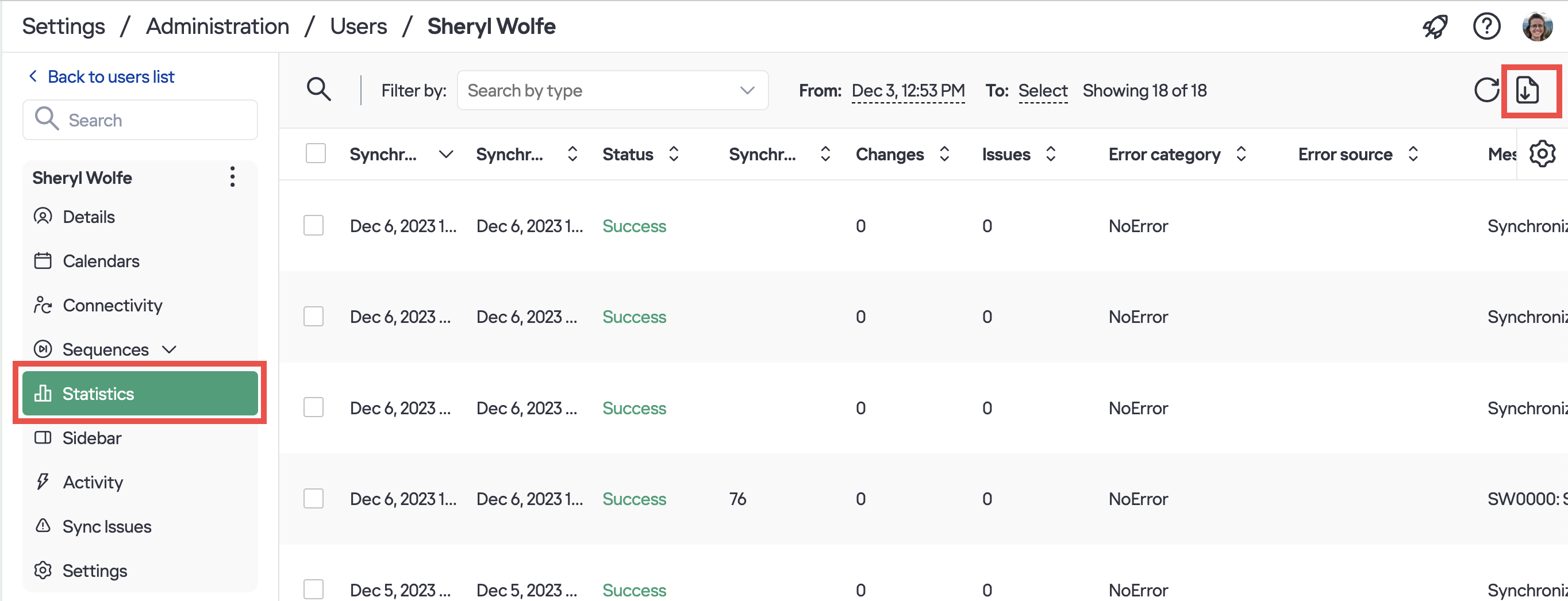
Monitoring synchronization issues for a specific User¶
If sync results for some objects cannot be created, updated, or deleted in MS Outlook, Gmail or in Salesforce, a synchronization issue for this object is logged for the User.
To view synchronization issues for a specific User:
1. Go to the Users tab
2. Open the User you want to monitor
2. On the Sync issues tab, you can view the list of issues for this User. The details about the issues are given in the following table:
- Type. Type of the object that could not be synchronized. For example, Emails, Events, Contacts, etc
- Name. The name of the object. For example, the Full name for Contacts or the Subject line for Events.
- Operation name. Create, Update, or Delete.
- Connectivity. It is the sync direction, i.e. from MS Outlook or Gmail to Salesforce or vice versa.
-
Error Code. The following values are possible:
0 – object is active / success result;
1 – object is locked / an error in the operation;
2 – object is already removed in a storage;
3 – object is inaccessible / updated prematurely in a storage. -
Description. The error text returned by the instance in which changes are going to be made.
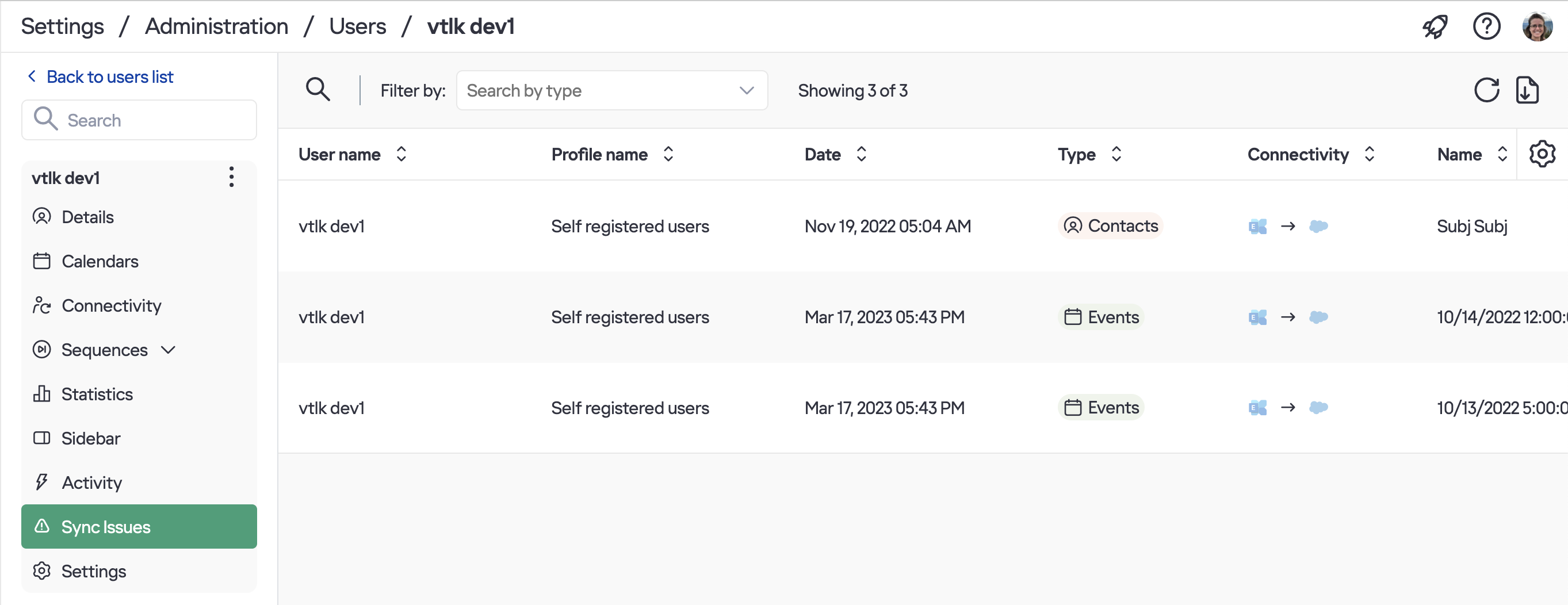

We would love to hear from you!